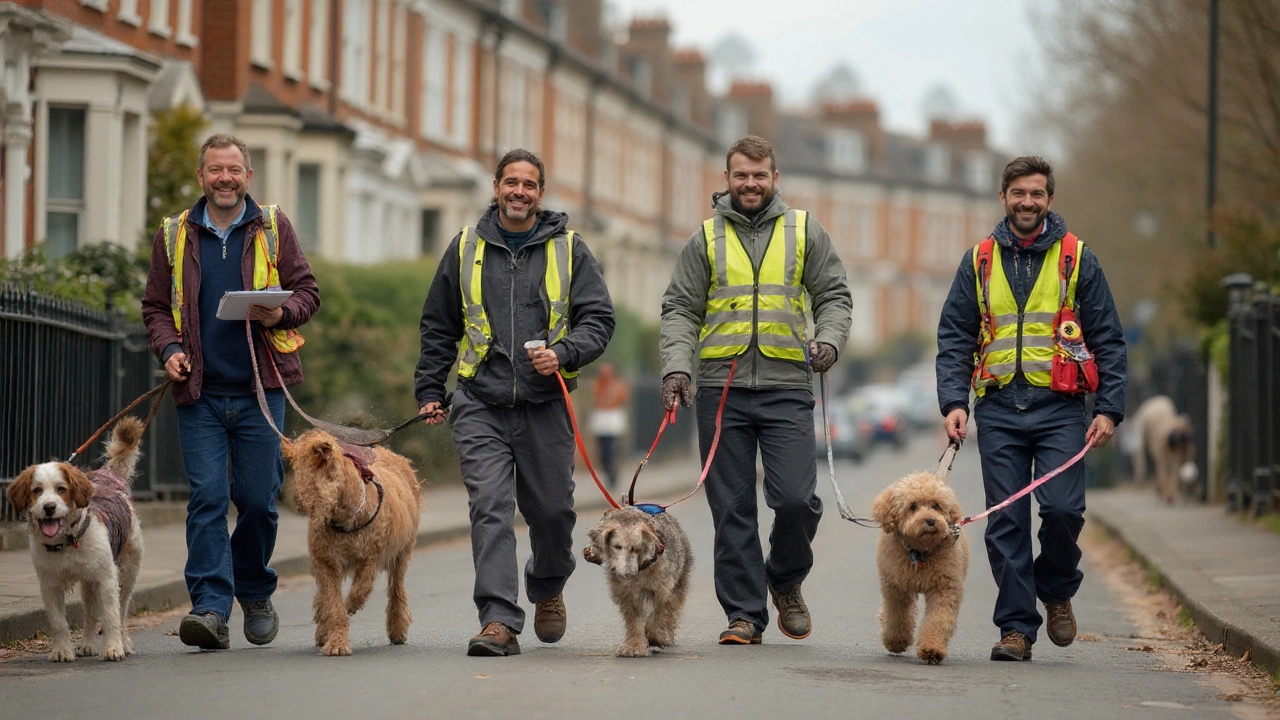Start Dog Walking: A Quick Guide for New Dog Owners
Got a new dog or finally ready to take the leash out? Walking your dog might look simple, but a good start makes all the difference. Below you’ll find the basics you need to feel confident, keep your pup safe, and enjoy the time together.
Gear & Safety Basics
First thing – pick the right gear. A sturdy, well‑fitted collar or a no‑pull harness works best for most dogs. If your dog tends to pull, a front‑clip harness can give you more control without hurting their neck.
Next, grab a leash that’s comfortable in your hand. A 4‑to‑6 foot nylon or leather leash is easy to manage. Avoid retractable leashes for beginners; they can encourage pulling and make it hard to react quickly.
Don’t forget poop bags. Carry a small roll in a pocket or attached to the leash. Picking up after your dog isn’t just polite – it’s required by law in most UK parks.
Safety gear also includes a reflective vest or LED collar for low‑light walks. Dogs can wander into traffic, so make sure you’re visible to drivers.
First Walk Strategies
Choose a calm, familiar spot for your first outing – a quiet street or a small local park works well. Avoid crowded areas until your dog learns to focus on you.
Start with a short walk, about five to ten minutes. Let your dog sniff and explore, but stay close to the leash. If they pull, stop walking, wait for a slack, then walk again. This teaches them that pulling doesn’t move them forward.
Use treats or a favorite toy as positive reinforcement. When your dog walks beside you without pulling, reward them with a quick treat or a quick game of tug. Keep the rewards small and frequent at first; you’ll phase them out as the habit sticks.
Watch your dog’s body language. A relaxed tail, ears forward, and a loose leash mean they’re comfortable. If you see them stiff, ears back, or panting heavily, it’s time to pause, offer water, and maybe head home.
Plan a consistent schedule. Dogs thrive on routine, so aim for two short walks a day – morning and evening. Consistency helps them know when to expect exercise and reduces anxiety.
As you get more confident, extend the route length gradually. Add new sights, a bit of hill work, or a different park. Mixing up the environment keeps walks interesting for both of you.
Finally, keep an eye on the weather. In hot UK summers, walk early or late to avoid the heat, and bring water for longer walks. In rain, use a waterproof jacket for you and a lightweight raincoat for smaller dogs.
Starting dog walking is all about simple steps, the right gear, and a bit of patience. Follow these basics, stay calm, and you’ll turn a short stroll into a daily habit that both you and your pup love.
Dog Walking Business: Is It Worth Starting in 2025? Pros, Challenges & Tips
Take an honest look at what it really takes to start a dog walking business, what you need, the money you can make, and the real pros and cons.
